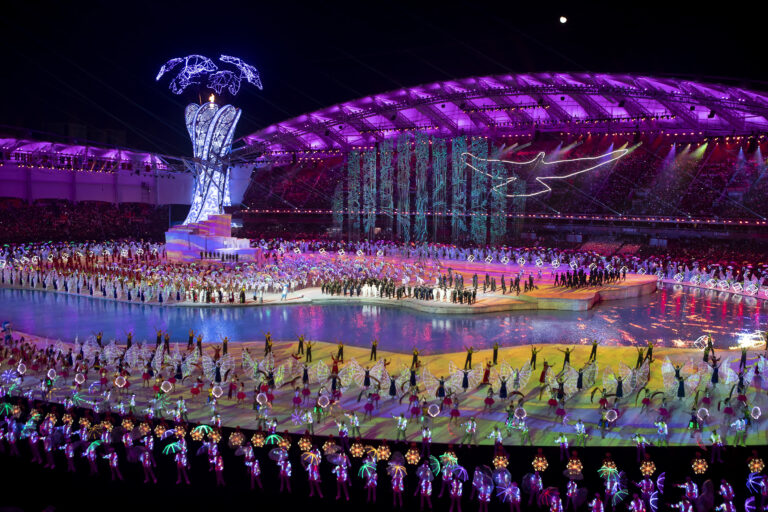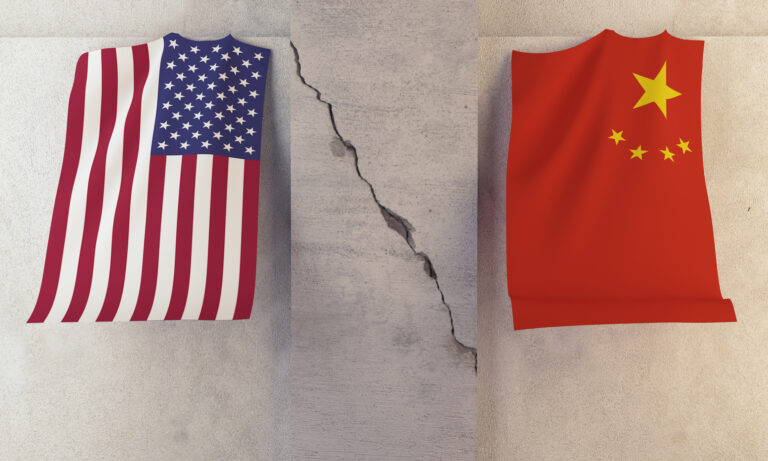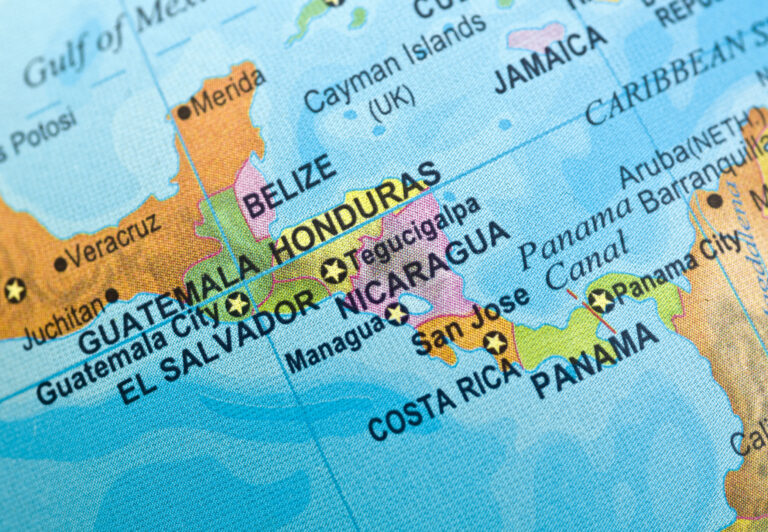Note: The following is excerpted
from Steven Mosher’s book, Population
Control—Real Costs, Illusory Benefits.
We have had
sufficient experience now with population programs to realize that
they can easily become a vehicle for elite pressure on the poor. I
fear that the elevation to legitimacy of “beyond voluntary
family planning” measures lends itself to precisely such
pressure. … Of course one might claim that such measures are
in the ‘ultimate’ interest of the poor, but this view leaves one in
the uncomfortable position of having to define the person, group, or
institution that is better able to judge the interests of the poor
than the poor themselves.
Richard Easterlin,
World
Development Report 1984 Review Symposium1
Li Aihai, happily married and the mother of a
2½-year-old girl, had a problem. She was four months pregnant
with her second child. Sihui county family planning officials had
come to her home and told her what she already knew: She had gotten
pregnant too soon. She hadn’t waited until her daughter was
four years old, as Chinese law required of rural couples. The
officials assured her that, because her first child had been a girl,
she would eventually be allowed a second child. But they were
equally insistent that she would have to abort this one. It was
January, 2000.2
She pleaded that she had not intended to get
pregnant. She was still wearing the IUD that they had implanted in
her after the birth of her first child, as the law required. They
were unsympathetic. Report to the family planning clinic tomorrow
morning, they told her as they were leaving. We’ll be
expecting you.
Aihai had other plans. Leaving her little
daughter in the care of her husband, she quietly packed her things
and went to stay with relatives in a neighboring county. She would
hide until she brought her baby safely into the world.
Childbirth-on-the-run, it was called.
When the county family planning officials
discovered that Aihai had disappeared, they began arresting her
relatives. While her father-in-law managed to escape with her
daughter, her mother-in-law and brother-in-law were arrested. Her
own mother and father, brother and sister, and three other relatives
were also imprisoned over the next few weeks. In all nine members of
her extended family were arrested, hostages to the abortion that was
being demanded of her.
But Aihai, knowing that her family supported her
pregnancy, stayed in hiding. And her relatives, each refusing to
tell the officials where she had gone to ground, stayed in jail.
Three months later the family planning officials
struck again. The date they chose, April 5, was an important one on
the Chinese traditional calendar. It was the festival of Qingming,
or “bright and clear,” a day on which rural Chinese men,
by ancient custom, “sweep the graves” of their ancestors.
Starting with the grave of their own deceased parents, they visit in
turn the graves of grandparents, great-grandparents, and ancestors
even further removed. At each stop they first clean off the
headstones and weed the plot, and then set out a feast for the
deceased, complete with bowls of rice, cups of rice liquor, and
sticks of incense.
Why did the family planning officials pick this
day of all days? Was it a further insult to the Li family, several
of whom were languishing in their jail? Or was the day chosen for a
very practical reason: With most of the men and boys away in the
hills feting their ancestors, the village would be half-deserted, and
they could carry out their plan without opposition.
The family planning officials came to the village
in the company of a wrecking crew armed with crowbars and
jackhammers. These fell upon Aihai’s home like a horde of
angry locusts. They shattered her living room and bedroom furniture
into pieces. They ripped window frames out of walls and doors off of
hinges. Then the jackhammers began to pound, shattering the brick
walls, and to knocking great holes in the cement roof and floors. By
the time they completed their work of destruction, you could stand on
the first floor of Aihai’s home and look up through two stories
and the roof to the blue sky above. The wrecking crew then moved on
to her parents’ house, and then to her in-laws’. At
day’s end, three homes lay in ruins. The family planning
officials confiscated the family’s livestock and poultry, and
then disappeared.
Aihai remained in hiding, out of reach of the
family planning officials, for two more months. It wasn’t
until her child was actually born, she knew, that he would be safe.
Abortions in China are performed up to the very point of parturition,
and it is not uncommon for babies to be killed by lethal injection
even as they descend in the birth canal. Only after she had given
birth—to a beautiful baby boy—did she make plans to
return home.
Aihai came back to find her family in prison, her
home destroyed, and family planning officials furious that she had
thwarted their will. Underlying their anger was hard calculation:
Every “illegal” child born in their county was a black
mark on their performance, depressing annual bonuses and threatening
future promotions. But family planning officials, like most Chinese
officials, have access to other sources of income. If you want your
relatives released, they now told Aihai, you must pay a fine of
17,000 Renminbi (RMB) (about US$2,000). Now this is a huge sum by
Chinese standards, the equivalent of two or three years’ income. It
was many days before she was able to beg and borrow enough from
family and friends to satisfy the officials’ demands, and win
her family’s release.
No sooner had she paid one fine than she was told
she owed another, if she wanted to regularize her son’s status.
He was currently a “black child,” family planning
officials explained to her. Because he was conceived outside of the
family planning law, he did not exist in the eyes of the state. As a
nonperson, he would be turned away from the government clinic if he
fell ill, barred from attending a government school of any kind, and
not considered for any kind of government employment later in life.
He would not even be allowed to marry or start a family of his own.
The government had decreed that “black children” would
not be allowed to reproduce; one generation of illegals was enough.
There was an out, however. If she were able to pay another fine of
17,000 RMB, however, her son would be issued a national identity
number, and would be treated like everyone else—almost. She
would still be required to pay double fees for his school supplies.
She was not surprised when she was ordered to
report for sterilization. The population control regulations, she
knew, were unyielding in this regard. Two children and your tubes
are tied. This time she made no effort to resist the authorities.
Having a second child had bankrupted her family. Having a third was
out of the question. Her newborn son would have no younger siblings.
Even so, Aihai considers herself far more
fortunate than Ah Fang, the wife of a neighboring villager. Married
at 19 to an older man in a time-honored village ceremony in front of
dozens of relatives and friends, Ah Fang is considered by everyone
she knows to be his wife. Everyone, that is, but the local Communist
authorities, whose unbending family planning regulations prohibit
women from marrying until they reach the age of 23.
When Ah Fang became
pregnant there was no chance that she would be allowed to carry her
child to term, even though it would have been her first. The
one-child policy does not apply to couples who are, in the view of
the Chinese state, merely cohabiting. For them—and for single
mothers of all ages—there is a zero-child policy. Ah
Fang was ordered to present herself at the local clinic for an
abortion. She went in as instructed on September 27, 2001. She has
been careful not to criticize the authorities, but her friends have
been less reticent. “She wanted to keep her baby,” they
complain openly, “but the law forbade it.”3
Such personal tragedies, far from being rare,
could easily be multiplied almost beyond belief. I met many “Li
Aihai”s and “Tang Ah Fang”s (the names are, of
course, pseudonyms) while living in a village in Guangdong province
from 1979 to 1980, and have met many in the years since. But it
would be impossible to know them all. For the history of China’s
25-year experiment in “controlling reproduction under a state
plan” is littered with literally millions—no, tens of
millions—of such victims of forced abortion and forced
sterilization.4
At the beginning of 1980, the Guangdong
provincial government secretly ordered a 1 percent cap on population
growth for the year. Local officials complied the only way they
could—by launching a family planning “high tide”
soon thereafter to terminate as many pregnancies as possible. The
rules governing this high tide were simple: No woman was to be
allowed to bear a second child within four years of her first, and
third children were strictly forbidden. Furthermore, all women who
had borne three or more children by November 1, 1979, were to be
sterilized.
Over the next few weeks I became an eyewitness to
every aspect of this draconian campaign. I went with young mothers
to family planning “study sessions” where they were
browbeaten by senior Party officials for getting pregnant. I
followed them as they were unwillingly taken under escort to the
commune clinic. I watched—with the permission of local
officials who were eager to demonstrate their prowess in birth
control to a visiting foreigner—as they were aborted and
sterilized against their will. I will never forget the pain and
suffering etched on the faces of these women as their unborn
children, some only days from birth, were brutally killed with
chemical weapons—poison shots—and then dismembered with
surgical knives.
The demands of China’s family planners
escalated as the eighties unfolded.5
The one-child policy, first suggested by Deng Xiaoping in a
hard-line 1979 speech, was in place nationwide by 1981. The
“technical policy on family planning” followed two years
later. Still in force today, the “technical policy”
requires IUDs for women of childbearing age with one child,
sterilization for couples with two children (usually performed on the
woman), and abortions for women pregnant without authorization. By
the mid-eighties, according to Chinese government statistics, birth
control surgeries—abortions, sterilizations, and IUD
insertions—were averaging more than thirty million a
year. Many, if not most, of these procedures were performed on women
who submitted only under duress.
The principal modification of the one-child
policy occurred in the mid- to late-eighties when, in response to
rising rates of female infanticide, the government relaxed the policy
in the countryside for couples whose first child was a girl. In some
parts of China this has devolved into a de facto two-child policy.
Some rural officials found the selective enforcement of a mixed
policy—one child for couples whose first child was a boy, two
children for couples who first child was a girl—impossible to
manage. Others, including the officials who run Sihui County in
Guangdong province, where Li Aihai lives, are doing quite well at
giving everyone two chances at a son, but no chance for two sons.
A quarter century after the Chinese got deadly
serious about family planning, the program continues to be carried
out against the popular will by means of a variety of coercive
measures. In presenting the program to foreigners, who can be
squeamish about such things, Chinese family planning officials are
careful to emphasize “voluntarism.” In speaking to their
own cadres, however, the only form of coercion ever condemned is the
actual use of physical force—tying down pregnant women for
abortions, for instance. But while force is frowned upon, it is
never punished. Home-wrecking, unlawful detentions, heavily punitive
fines, and like measures continue to be, as they have been from the
late 1970s, the whip hand of the program. Women are psychologically
and physically pressured to abort unauthorized children to the point
of being dragged to the abortion mill. Networks of paid informants
are used to report on unauthorized pregnancies of neighbors, family,
and friends. Entire villages are punished for out-of-plan births.
Officials conduct nighttime raids on couples suspected of having
unauthorized children, and they keep detailed records on the sexual
activity of every woman in their jurisdiction—so much for
privacy. And to make the coercive regime complete, the “family
planning centers” have prison cells—complete with bars—to
detain those who resist forced abortion or sterilization. Forced
sterilization is used not only as a means of population birth
control, but sometimes as punishment for men and women who
disobey the rules.6
The result of this systematic and relentless
coercion is that millions of IUD insertions, sterilizations, and
abortions continue to be performed each year. The national family
planning journal continues to issue thinly disguised injunctions to
get the job done at all costs. Officials are exhorted to take “real
action” and “effective measures” to achieve
“practical results.” In short, Deng Xiaoping’s
no-holds-barred approach still dominates the program. “Use
whatever means you must [to reduce China’s population],”
China’s paramount leader ordered Party officials back in 1979,
“Just do it.”7
They have been “just doing it” ever since.
The Chinese government
maintains that abuses are the exception, not the rule, and constitute
deviations—local aberrations—from national policy. But
when the Guangdong provincial government orders 25,000 abortions to
be carried out in Huaiji County, as it did in 2001 in response to
reports of laxity in the local family planning program, this can
hardly be described as a “local aberration.” Nor can the
forced abortion campaign undertaken by the Guangxi provincial
government in the spring of 2007, complete with huge remedial fines
for those who had successfully birthed babies outside of the state
plan, be regarded as anything other than the expression of national
policy. The Chinese program remains highly coercive not because of
local deviations from central policies but as a direct, inevitable,
and intentional consequence of those policies.
This is no secret.
Articles in the Chinese media openly speak of the need for coercion
in family planning, and senior officials continue to endorse the
policy as currently practiced. Chinese Prime Minister Zhu Rongji,
for instance, said on October 13, 1999 that “China will
continue to enforce its effective family planning
policy in the new century in order to create a favorable environment
for further development.” (italics added.) And in its White
Paper on Population, released on December 19, 2000, the PRC avows
that it will continue the one-child policy for another fifty years.
The White Paper actually sets a population target of 1.6
billion people by the year 2050.
Chinese officials, as they have for the past two
decades, sought to suggest to the outside world that these targets
and quotas will be achieved by “education” and
“persuasion,” rather than coercion and compulsion: The
velvet tongue, rather than the mailed fist. As an example of the
effectiveness of “education” and “persuasion,”
the White Paper reported that women were postponing
childbirth. While in 1970 they gave birth to their first child at
20.8 years of age, by 1998 they were putting off childbearing until
they were almost three years older, age 23.6, to be exact. But this
claim is disingenuous. Women are giving birth later in the PRC not
because officials have gently whispered in their ears, but because
they are strictly forbidden to marry until age 23, and hustled off
for an abortion if they become pregnant out of wedlock. Ah Fang
would have given birth at 20, had she not been ordered to terminate
her pregnancy. As it is, she will be 23 or older when she has her
first (and perhaps her only) child.
Powerful images of China’s teeming
multitudes, dating back to the time of Marco Polo, are scratched
deeply on Western minds. The wandering Venetian found much to admire
in Cathay’s ancient greatness, civilization and art, but it was
the sheer number of Chinese that left him astounded. Skeptical
contemporaries gave him the mocking title “Il Milione”
for the frequency with which he used this superlative to describe the
populations of China’s cities and provinces, the numbers of her
civil functionaries, and the seemingly endless ranks of her men under
arms.
But Marco Polo was, in this respect, a perfectly
reliable witness. The world had never seen a more populous empire
than the thirteenth-century Sung Dynasty of his acquaintance. It had
a population of some 110 million occupying a continent-sized
territory with a standing army of . . . a million. It dwarfed
contemporaneous Western states, such as the England of Henry II, in
every respect. Moreover, it had been in existence, in one dynastic
guise or another, for over 1500 years. China’s population was
already 60 million at the time of Christ and reached ever-greater
peaks during later dynasties—80 million in the ninth-century
Tang Dynasty, 110 million at the time of Marco Polo’s sojourn,
200 million in the sixteenth-century Ming, 425 million in the
nineteenth-century Qing. Throughout these long centuries, China’s
large population was rightly seen as an indispensable element of its
national greatness and imperial power, both at home and abroad.
But there is another,
darker Western perception of China’s population, dating back to
the Mongol hordes of the non-Chinese Genghis Khan, which sees them
“as a faceless, impenetrable, overwhelming mass, irresistible
once loosed.”8
And a mass, it might be added, that was thought to be feverishly
multiplying. If all of the Chinese people were formed up into a
column five abreast, went a cocktail riddle popular in the 1920s, how
long would it take the entire column to march past a fixed point?
“Never!” was taken to be the correct answer. The column
would turn out to be endless, because the Chinese would simply breed
faster than they marched. Or so it was wrongly supposed.9
The image of China’s population as a “yellow peril”
was brought vividly to life again in the 1950s, when a sea of Chinese
flooded across the Yalu River into Korea, and “human wave”
attacks were reported by American troops. The lurid and hyperbolical
reporting of China’s “overpopulation problem” over
the past twenty years arises in part from these same dark fears—and
further incites them. In the view of the new Malthusians, China was
a boiling pressure cooker of people, who at any time could explode
beyond her borders in a human flood of illegal immigration—or
conquest.
Supporting China’s One-Child Policy
The controllers welcomed China’s 1979 foray into population
control with a mixture of euphoria and relief. Euphoria that the
world’s most populous nation was last getting serious about its
numbers. Relief because China would now dam up its seas of people
before they could inundate the world. Not that they were content to
stand idly by while the Beijing regime put the fix on one-fifth of
humanity. No, they would roll up their sleeves and pitch in. They
would help the design and implement a program that would turn China,
everyone’s brutish infant of overpopulation, into a poster
child of family planning. China would become a model for other
countries. Depressing the birthrate in China—important in
itself—would in this way help them to further depress
birthrates worldwide. It would move the controllers at the United
Nations Population Fund (UNFPA) and elsewhere that much closer to
their global goal, as stated by UNFPA Executive Director Nafis Sadik,
of “achieving the lowest level of population in the very
shortest time.”10
No one stopped to think
about China’s abysmal human rights record. No one expressed
concern that the Chinese government, in dictating how many children a
couple might have, was violating parental rights. No one worried
that, in enforcing the one-child policy, the government might resort
to coercion, as it had done in past political campaigns.
Everything—economic development, democracy and even human
rights—would have to await the taming of her numbers.
You can read more in Steve’s book, Population Control: Real Costs, Illusory Benefits, available here.
Endnotes
3
Quoted in Josephine Guy, “Women and Child Abuse in China,”
PRI Review 11(4) (September-October 2001): 3.
4
The quote comes from Vice Premier Chen Muhua, who said in 1979 that
“China is a socialist country. We should be able to control
reproduction the same way that we control production under a state
plan.” See my Broken Earth: The Rural Chinese (Free
Press: New York, 1983).
5
I
have made periodic trips into China to assess family planning
policies, have commissioned others to undertake such investigations,
and have closely followed both official Chinese pronouncements and
reports appearing in the specialized literature and the population
press.
6
See the testimony of Gao Xiaoduan who, as a senior population
control official in Fujian province, had systematically committed
these and other abuses of human rights with the encouragement and
support of her superiors. Following her escape from China, Mrs Gao
was invited by Cong. Christopher Smith (R-NJ) to testify before the
Subcommittee on International Operations and Human Rights of the
International Relations Committee. Gao Xiaoduan, “Forced
Abortion and Sterilization in China: The View from the Inside,”
Subcommittee on International Operations and Human Rights, 10 June
1998 Human Rights in China: Improving or
Deteriorating Conditions, Hearing before the Subcommittee on Africa,
Global Human Rights and International Operations of the Committee on
International Relations House of Representatives,
http://commdocs.house.gov/committees/intlrel/hfa27067.000/hfa27067_0.HTM#132.
Also see my book, A Mother’s Ordeal: One Woman’s
Fight Against China’s One-Child Policy (Harcourt Brace:
New York, 1993), for similar abuses.
8
Harold R. Isaacs, Scratches on Our Minds: American Images of
China and India (New York: John Day, 1958), 63-64. Also quoted
in my China Misperceived: American Illusions and Chinese Reality
(New York: Basic Books, 1990), 18-19.
9
Given that China’s population was roughly 500 million at the time,
and assuming that the column marched at 3 miles an hour, it would
take approximately 762 days, or a little more than two years for the
entire column to pass under the arch.
10
The quote is from Nafis Sadik, the former Executive Director of the
UNFPA, as quoted in Nicholas Eberstadt, “UNFPA: A Runaway
Agency,” PRI Review 12(3) (May-June 2002): 8.










